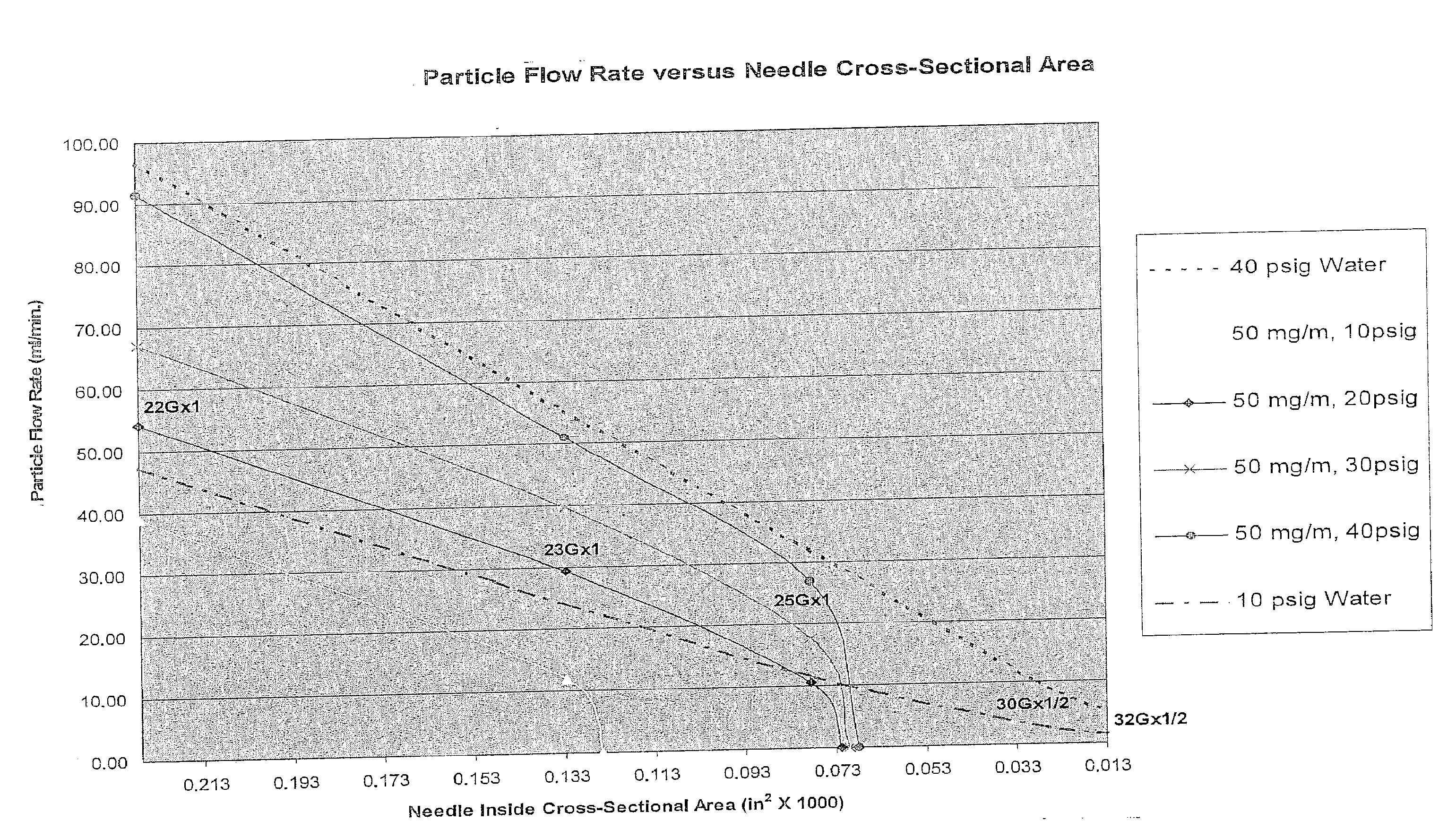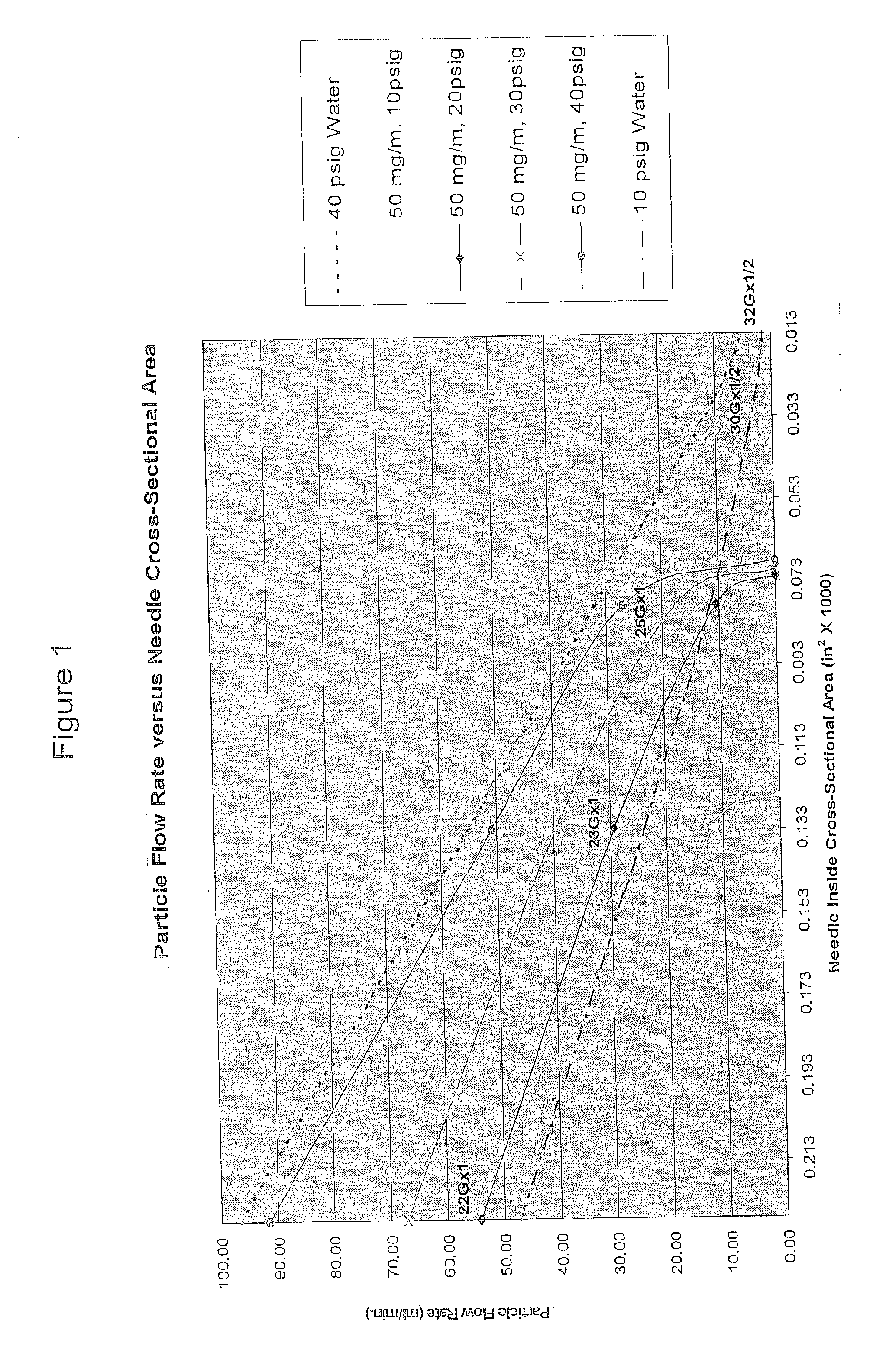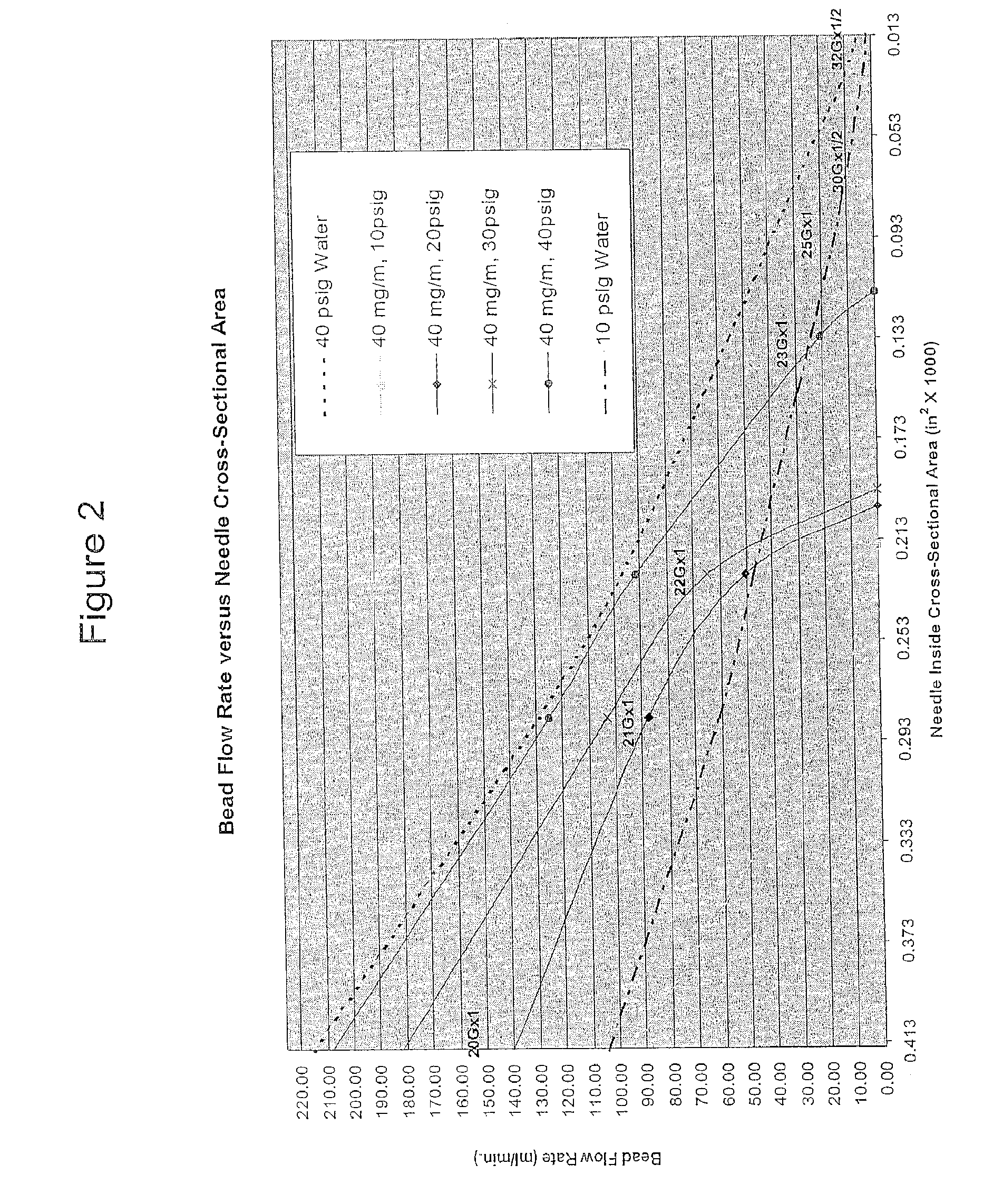Methods and Devices for Minimally-Invasive Delivery of Cell-Containing Flowable Compositions
- Summary
- Abstract
- Description
- Claims
- Application Information
AI Technical Summary
Benefits of technology
Problems solved by technology
Method used
Image
Examples
example 1
Percutaneous Delivery
[0130]Overview: According to one exemplary in vivo analysis method, the cells or the cell-containing flowable composition is administered percutaneously to a desired site of administration in a Yorkshire swine model using a needle-based delivery device. According to this method, twenty male or female Yorkshire swine received two femoral stents, one in each of the left and right femoral arteries, following balloon-inflation injury to the treatment site. Nine of the subjects received subsequent percutaneous injection of the cell-containing flowable composition perivascularly to the femoral sites after stent implantation; nine of the subjects received a cell-free flowable composition perivascularly to the femoral sites after stent implantation; two subjects received stents, but received no flowable composition. During percutaneous administration of the cell-containing or cell-free flowable composition, the needle or catheter is directed to the desired site of admin...
example 2
[0148]Overview: To evaluate the safety and efficacy of perivascular injections of the flowable composition at different locations peripheral to stented femoral arteries, the flowable composition was administered to a variety of non-luminal anatomical locations adjacent to the treatment site in a Yorkshire swine model. In one embodiment, the cell-containing flowable composition was administered to three anatomical locations: the interior surface of the femoral sheath adjacent the blood vessel (Group 1), the exterior surface of the femoral sheath adjacent the muscular sheath (Group 2), and the interior surface of the muscular sheath adjacent the muscle (Group 3). A control group received an injection of a cell-free flowable composition administered to the exterior surface of the femoral sheath (Group 4). According to additional embodiments, the flowable composition can be administered to additional anatomical locations adjacent the blood vessel including but not lim...
example 3
Cell Dosage
[0162]To evaluate the safety and efficacy of different dosages of the flowable composition administered to a desired site of administration, the flowable composition will be administered in a variety of dosages or cell numbers. In one embodiment, the flowable composition will be administered in three different concentrations or cell counts at the same anatomical location, for example, within the femoral sheath adjacent the blood vessel: 0.5×106 cells in 0.5 mL biocompatible material; 1×106 cells in 1 mL biocompatible material; and 2×106 cells in 2 mL biocompatible material.
[0163]According to these embodiments, flowable composition will be administered in various dosages and the safety and efficacy of the administration evaluated several days or months following administration. According to one embodiment, twelve male or female Yorkshire domestic swine will undergo balloon angioplasty followed by introduction of a biliary stent at two locations in each animal. Right caroti...
PUM
 Login to View More
Login to View More Abstract
Description
Claims
Application Information
 Login to View More
Login to View More - R&D
- Intellectual Property
- Life Sciences
- Materials
- Tech Scout
- Unparalleled Data Quality
- Higher Quality Content
- 60% Fewer Hallucinations
Browse by: Latest US Patents, China's latest patents, Technical Efficacy Thesaurus, Application Domain, Technology Topic, Popular Technical Reports.
© 2025 PatSnap. All rights reserved.Legal|Privacy policy|Modern Slavery Act Transparency Statement|Sitemap|About US| Contact US: help@patsnap.com



